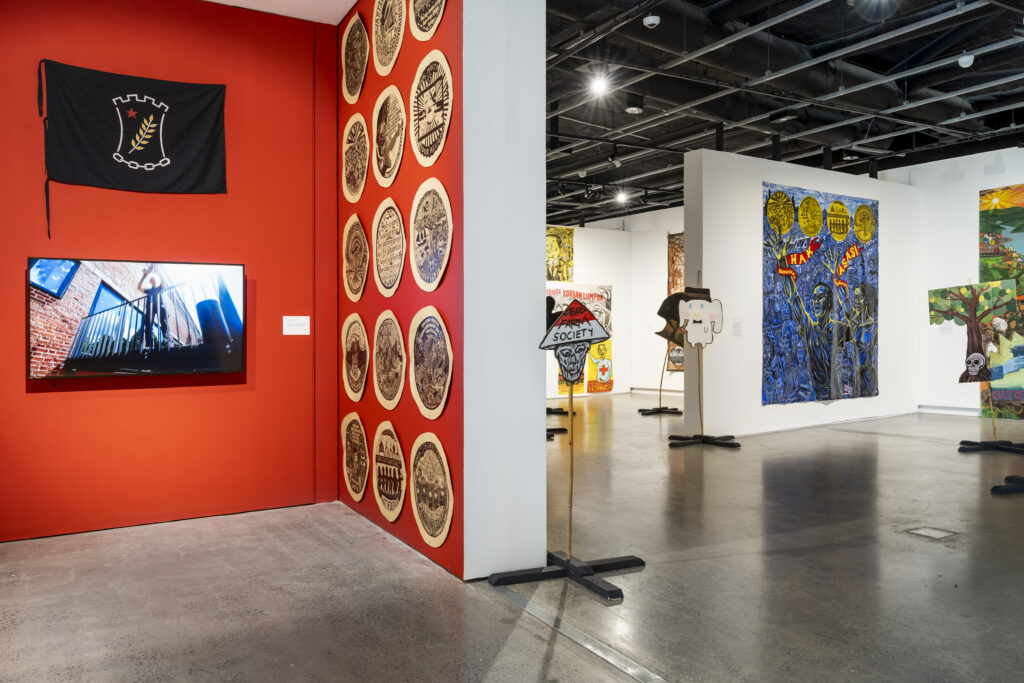Blog post by AEL Summer Scholarship students Jorge Marino Brito and Emily Parker.
Taring Padi is an art collective from Indonesia that stands out on the global art scene for its inherently political and activist approach. Founded in the post-authoritarian context of Indonesia in the late 1990s, this group has utilised art as a tool for social change, addressing issues such as social injustice, human rights and resistance against oppression. Taring Padi’s practice brings art into public spaces by using accessible techniques and reflects a deep commitment to art as a means of communication and mobilisation.
The transition of such activist art into galleries raises significant questions about the interactions between activism and the art market. This migration is not just a physical relocation but a transformation in how art is perceived, interacted with, and valued. On entering a gallery space, activist art faces the risk of decontextualization, which could be interpreted as a loss of its essence and urgency. This process can dilute the critical charge of the art, transforming it into an object of aesthetic consumption rather than a voice for social reform.
However, the decontextualization associated with the transition to gallery space should not be seen exclusively as unfavourable. Galleries provide additional platforms for activist art, offering opportunities for dialogue and reinterpretation which can potentially enrich the art by challenging perceptions and fostering reflection on a broader audience. This relocation can also expand the reach of the artists’ message, allowing activist voices to reach audiences who would otherwise not be exposed to these critical messages.

The commercialisation of activist art is a complex issue. Transforming these works into commodities raises legitimate questions about the potential betrayal of the spirit of activism, reducing the struggles depicted to objects for consumption. Nonetheless, this same commercialisation can increase the visibility of the represented causes, introducing critical debates into previously inaccessible spaces and generating essential conversations.
Introducing activist art into galleries can also grant these works a certain legitimacy, which challenges audiences to confront issues of social and political relevance, and act as a bridge between different sectors of society. This practice can amplify the impact of art, extending beyond the traditional boundaries of activism.
Reflecting on the exhibition of activist art in galleries compels us to reconsider the role of art in provoking social change, the influence of the art market, and the potential of activist art to transform these spaces. This dynamic between activism and commercialisation is not merely a matter of ethical compromise or co-optation; it represents an opportunity to reimagine the boundaries of what art can achieve in our contemporary context.
Including the work of Taring Padi into the commercial art circuit underscores for us the importance of an ongoing critical engagement with art and its role in society. Through this dialogue, we recognise the ability of activist art to challenge, provoke, and enrich our understanding of the world, reaffirming the value of art as a vital tool for reflection and social change.
Taring Padi: Tanah Tumpah Darah is on at Griffith University Art Museum from 29 February to 25 May 2024. More information can be found here.
Images: Taring Padi: Tanah Tumpah Darah (installation view), Griffith University Art Museum, March 2024. Courtesy of Taring Padi. Photo: Louis Lim